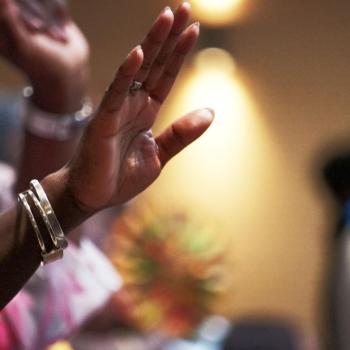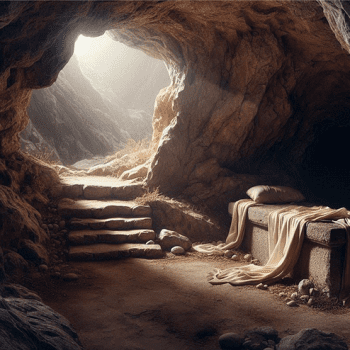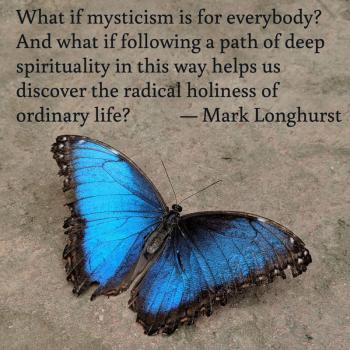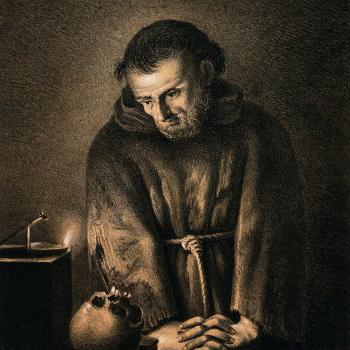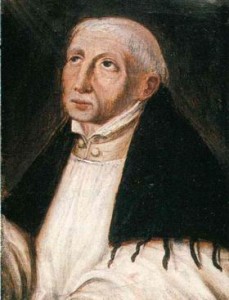
Walk into a Catholic bookstore — or a general bookstore large enough to have a “Christian mysticism” section — and you will see books by or about Thomas Merton, Julian of Norwich, John of the Cross, and Teresa of Avila, along with anonymous works like The Cloud of Unknowing or The Way of a Pilgrim. These are the “A-List” mystics: figures who are renowned for their sanctity, their wisdom, and their contemplative teaching.
Anyone who is interested in discovering the wisdom of the mystics ought to read the writings of the “A-Listers.” Other A-Listers include Evelyn Underhill, Meister Eckhart, Francis of Assisi, Bernard of Clairvaux, and Hildegard of Bingen.
But there are many Christian contemplatives and visionaries who aren’t nearly as well known as these “rock star” mystics. Not everyone gets to be a celebrity — not every musician is as famous as the Beatles; not every actress is as famous as Meryl Streep. But countless musicians, actors, and other types of artists create work that is world-class, even if they themselves are not household names.
The same dynamic is at work among Christian mystics. Some of the greatest mystics are not well-known at all, even among people who are interested in mysticism (okay, let’s be real: mysticism itself is hardly a mainstream phenomenon, so even the greatest mystics — with the possible exception of Francis of Assisi — are relatively unknown figures). Yes, even among “mysticism geeks,” there are many contemplatives whose work is woefully unknown — who deserve to be read, and studied, and talked about, far more than they currently are.
So for today’s post I’d like to introduce you to three such “underrated” contemplatives. Perhaps you’ve run across their names here and there (especially if you’ve been reading my blog for a while). But I want to formally introduce you to these figures in the hopes that you’ll take a look at their wonderful writings.
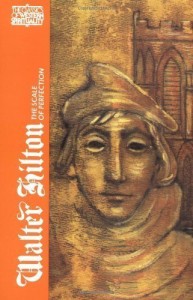
Walter Hilton
Walter Hilton is to Julian of Norwich and the author of The Cloud of Unknowing what George Harrison of the Beatles was to John Lennon and Paul McCartney. In other words, just as Harrison was an excellent songwriter in his own right but almost totally overshadowed by the two legends who were his bandmates, so too Walter Hilton sadly gets overlooked because of the two mystical geniuses who were his contemporaries in late fourteenth century England.
And that’s a shame, because in some ways Hilton’s writings, especially his masterpiece The Scale of Perfection, are more accessible and user-friendly than the visionary poetry of Julian or the monastic austerity of The Cloud.
Hilton was born probably in the 1340s and died in 1396; little is known about his life, although it is likely he studied law at Cambridge before becoming an Augustinian priest. His writings, mostly in Middle English, were popular during his lifetime and the following century. Hilton reveals a keen understanding of the psychology of contemplative life, and (like The Cloud) reveals considerable talent as a spiritual directer in his work.
The Scale of Perfection concerns the ongoing process of inner transfiguration that marks perseverance in contemplation. Hilton follows the longstanding mystical tradition that understands the human soul as created in the image and likeness of God, and the contemplative life consisting of a gradual reformation of the soul, to restore the image that has been defaced by sin.
Book to read: The Scale of Perfection
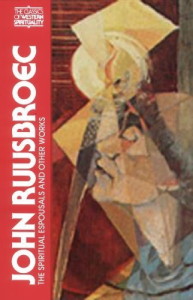
John Ruusbroec
Evelyn Underhill, the renowned British scholar of Christian mysticism, held John Ruusbroec in the highest esteem. She referred to him as “great,” “mighty,” “supreme,” “the most transcendental of all mystics.” In The Mystics of the Church, she notes that Ruusbroec “seems often to use [Meister] Eckhart’s ideas as a means of expressing his own experiences, but the ardour and realism with which he invests them are his own.” Who
was this relatively obscure figure who won Underhill’s admiration?
Unlike the Meister, Ruusbroec was never formally charged with heresy. In fact, Ruusbroec has been beatified by the Catholic Church — one step short of being declared a saint. So while institutional Christianity accepts him as orthodox, his work is arguably every bit as radical as that of the more notorious Eckhart.
Born in the village of Ruisbroek (in modern-day Belgium) in 1293, young John began studying for the priesthood with his uncle when only 11 years old. After his ordination in 1318 he served as a parish priest until 1343, when he and two other priests retired to the forest of Groenendal, near Brussels, to become hermit contemplatives. Eventually, though, their small community became an Augustinian friary, with Ruusbroec serving as the community leader until his death in 1381.
He was a prolific writer, usually composing his works in Flemish rather than Latin, in order to reach a wider audience. Today his best known work is The Spiritual Espousals, a luminous meditation on how Christ, the Bridegroom, unites human nature with his own, in a sacred marriage officiated by the Holy Spirit.
Book to read: The Spiritual Espousals and Other Works

Caryll Houselander
If you are looking for a devotional book to read in Advent, consider The Reed of God, one of the better known works by Caryll Houselander, and English poet, artist, writer and mystic. Not a particularly pious woman (she smoked cigarettes and was known to swear), Houselander suffered from panic attacks and poor health; she succumbed to breast cancer at age 53. Baptized a Catholic at age 6 (she called herself a “Rocking-Horse Catholic” rather than a “Cradle Catholic”), she made the faith her own as a young adult and became a popular spiritual writer in her lifetime.
She was also a mystic, having had several visions of Christ, including one where she saw Christ like he might be depicted on a Russian Orthodox icon, spread across the sky and watching over the world. Another time, in a vision reminiscent of Thomas Merton’s epiphany on a street corner in Louisville, she was riding the London Underground when she saw Christ within everyone on the train. From this, Houselander developed a truly mystical ability to see Christ in all persons, even in “sinners” — those who, on the surface, may seem to be the most alienated from Christ or from spirituality.
The author of over a dozen books, her output included poetry (and even her prose writings have a decidedly poetic “voice”). But no work is as enduring as The Reed of God, her meditation on Mary, emphasizing how real, how human, how down to earth the Mother of God was.
The book shimmers with contemplative insight. She calls Advent (the season of preparation before Christmas, symbolically linked to Mary’s season of pregnancy) “the season of the secret, the secret of the growth of Christ, of Divine Love growing in silence. It is the season of humility, silence, and growth.” (Reed, 28).
She speaks of the importance of praying in silence, of waiting, and of seeking Christ, “because in the search we become aware of the wonder and mystery that contentment blinds us to.” (Reed, 119).
Book to read: The Reed of God
Are there other “underrated” mystics whose teachings have been important to you? If so, please let me know — either through social media or by leaving a comment here.
Enjoy reading this blog?
Click here to become a patron.





